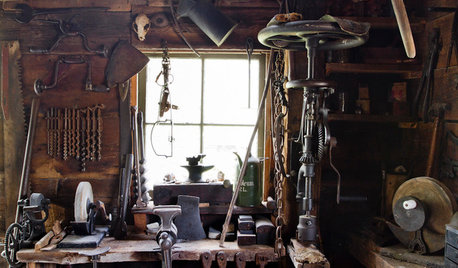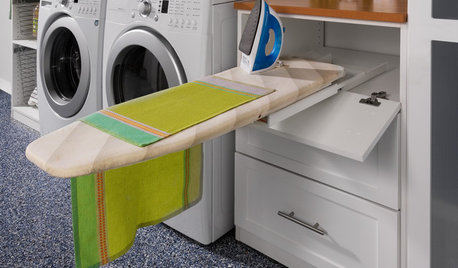sewing machine thread snap problem
ethereal_butterfly
17 years ago
Related Stories

STUDIOS AND WORKSHOPSA Stitch in Time: Creative Sewing Spaces
Sewing rooms have become popular again as people of all ages embrace simple crafts they can do at home
Full Story
BEDROOMSHow to Choose the Perfect Bedsheets
Don't lose any shut-eye over scratchy or ill-fitting sheets; our mini guide to materials, thread count and fit will help you sleep tight
Full Story
UPHOLSTERYFabric Focus: Make Your Interiors More Durable With Outdoor Fabric
Indoor-outdoor fabric is strong and beautiful, whether in the backyard or the living room
Full Story
PRODUCT PICKSGuest Picks: Loving Linen All Over the Home
Charmingly rumpled or ironed smooth, these linen finds from napkins to curtains bring casual elegance to rooms
Full Story
FEEL-GOOD HOMEDecorate With Intention: Nourish Your Creativity at Home
If your creative time seems all too short and slapdash, make haste in checking out these ideas to redesign your approach
Full Story
ORGANIZINGOrganizing Secrets: It’s the Little Things
Get these 8 small areas under control for a major boost in overall tidiness at home
Full Story
MATERIALSAre You a Maker? Show Us Your Favorite Tool or Material
Houzz Call: A tool or material can be a maker’s best friend. We’d like to see your favorite — and what it helps you achieve
Full Story
FEEL-GOOD HOMESimple Pleasures: Make Do and Mend
Experience the satisfaction of fixing, repurposing and creating things yourself around the home
Full Story
LAUNDRY ROOMS8 Ways to Make the Most of Your Laundry Room
These super-practical laundry room additions can help lighten your load
Full Story
BEDROOMS13 Simple Steps to a Perfectly Made Bed
Drift off to dreamland in a delightfully soothing, artfully dressed bed worthy of a posh hotel
Full StorySponsored
More Discussions






colleenny
colleenny
Related Professionals
Austin Furniture & Accessories · Dallas Furniture & Accessories · Milwaukee Furniture & Accessories · Pinehurst Furniture & Accessories · Arkansas Interior Designers & Decorators · East Patchogue Interior Designers & Decorators · Liberty Township Interior Designers & Decorators · Athens Furniture & Accessories · Cedar Rapids Furniture & Accessories · Columbia Furniture & Accessories · Union City Furniture & Accessories · Adelanto Furniture & Accessories · Encinitas Furniture & Accessories · San Juan Capistrano Furniture & Accessories · SeaTac Staircases & Railingsethereal_butterflyOriginal Author
colleenny
colleenny
ethereal_butterflyOriginal Author
benstanton_live_com_au
kaneda_yahoo_com
apomixis
cross_stitch